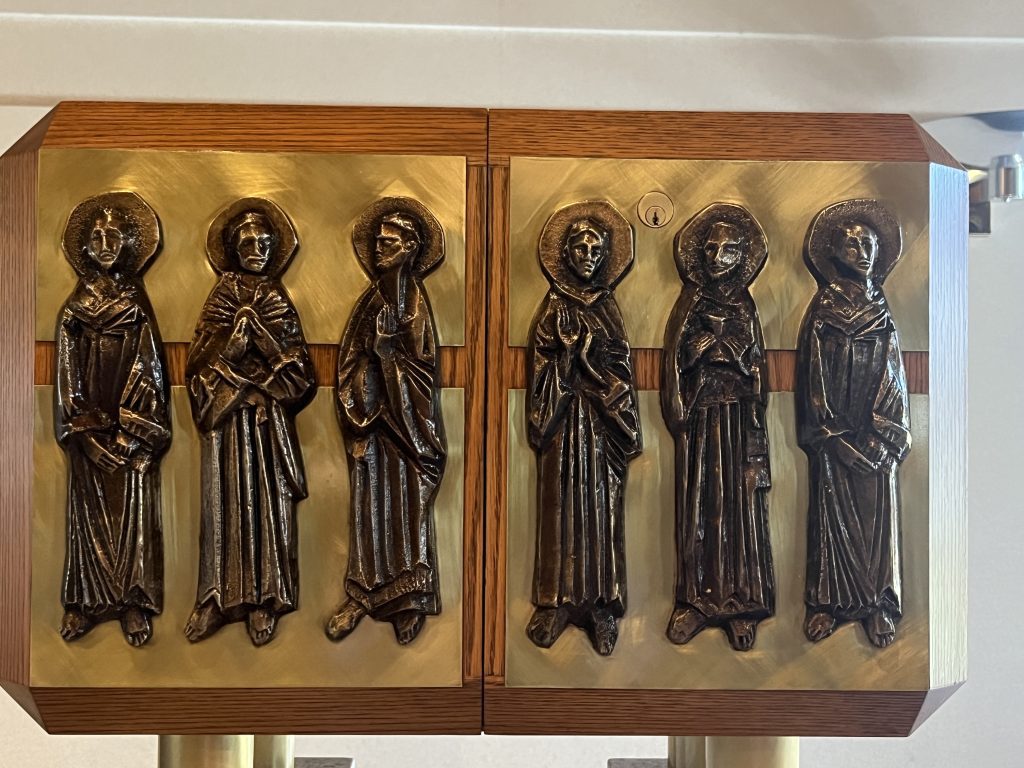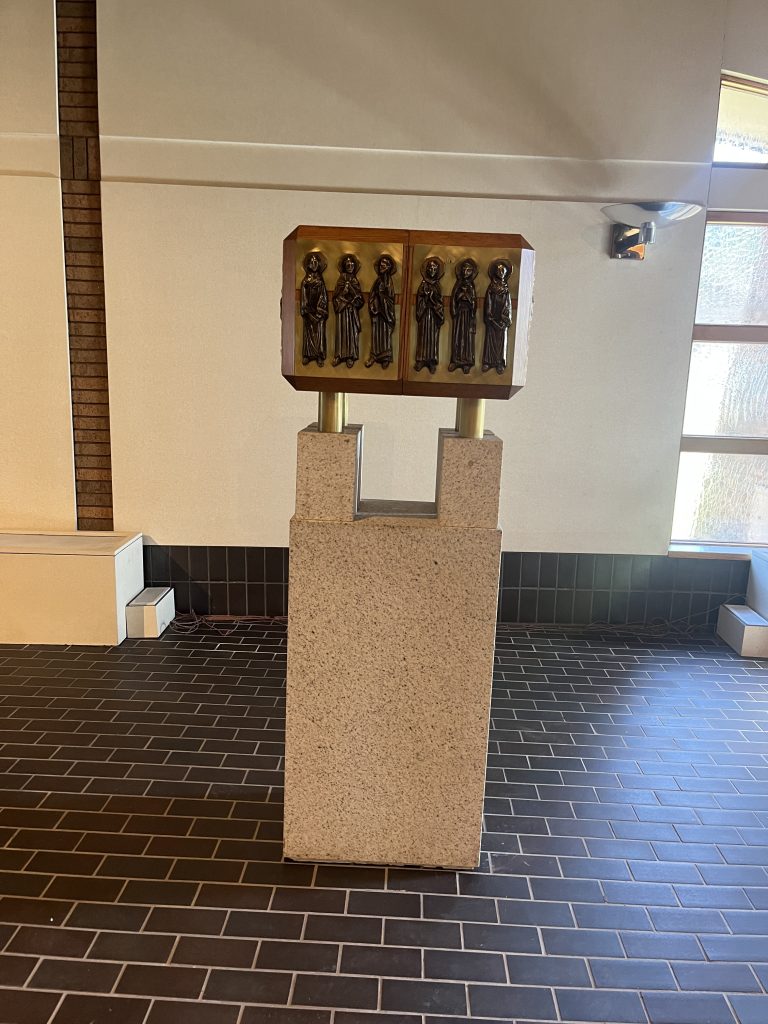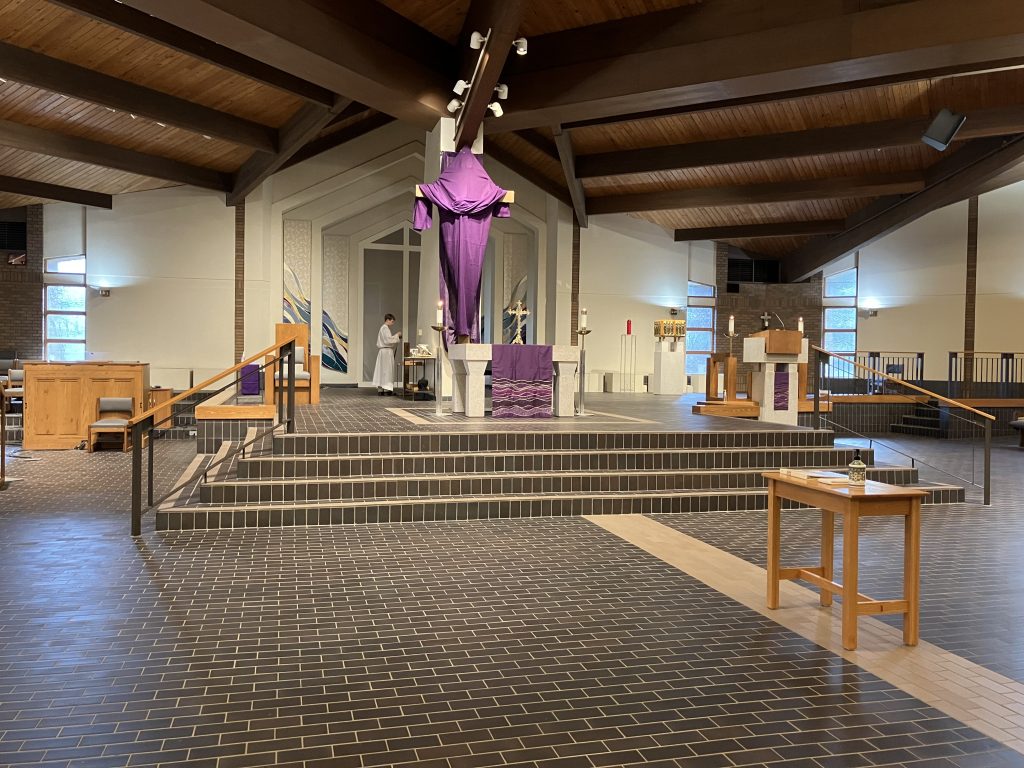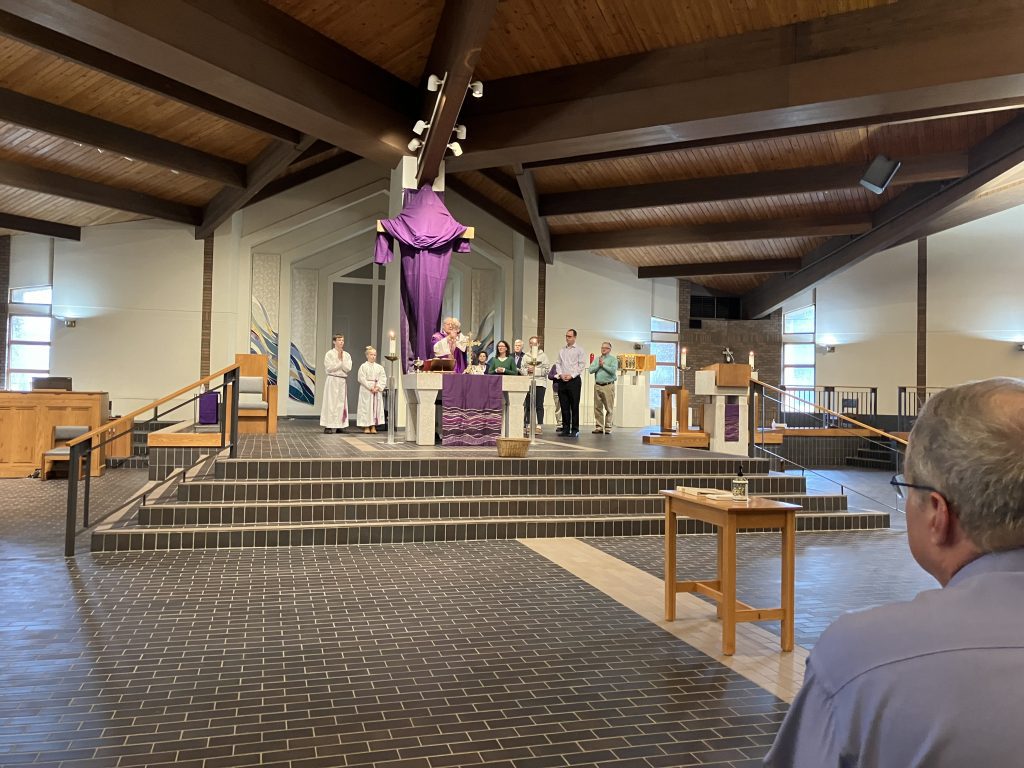Notes on the Tabernacle

The beautifully refurbished tabernacle has now been installed in the sanctuary of the main church. We should now genuflect when we enter and exit our pews to honor Christ’s presence in the Blessed Sacrament.
Please also genuflect before entering the sanctuary for private prayer before the tabernacle. The main church will now be open Tuesday/Wednesday/Thursday from 8:15 a.m. – 2 p.m. and Friday 8:15 p.m. – 12 p.m. The west doors of the church will be open at these times. Chapel access will be through the interior doors. The exterior chapel doors will only be open before and after Mass, Confession, and events taking place in the chapel.
Adoration will still take place in the chapel on Thursdays and the first Friday of each month. Likewise, weekday Masses will still be celebrated in the chapel, with the Blessed Sacrament being reverently carried between the chapel and the tabernacle.
Why Is the Tabernacle Important?
Once the Eucharist has been consecrated during Mass, it remains the body, blood, soul, and divinity of Jesus Christ. Catholic churches have tabernacles to serve as secure, reverent vessels for the Eucharist between Masses. The Blessed Sacrament is reserved for Holy Communion outside of Mass (especially for the sick) and for Eucharistic Adoration (prayer in Christ’s Eucharistic presence).
Why Did We Move Ours?
At Our Lady of the Lake, we want to ensure that the Eucharist is always at the center of our parish life. We also want to be obedient to the Church’s laws and guidelines. That’s why we moved our tabernacle into the sanctuary of the main church (the raised area with the altar at its center), specifically the area behind the ambo (where the Scriptures are proclaimed). This location honors the reserved Eucharist and more clearly shows that it is the fruit of the holy sacrifice of the Mass celebrated nearby on the altar.
Canon law requires that the tabernacle be kept in a beautiful, dignified, and prominent part of the church that is easily accessible to the faithful for their private prayer. It should either be in the sanctuary (but preferably not on the main altar) or in another part of the church that is organically connected to the sanctuary. Based on the guidance of the Church and our bishop, we decided to move the tabernacle to a part of the sanctuary separate from the altar. This places the reserved Blessed Sacrament at the heart of our church while also encouraging us to focus on Christ becoming present at the consecration on the altar during Mass.
Moving our tabernacle also gave us the opportunity to refurbish it. The company that originally constructed our tabernacle installed new gold plating in its interior, re-stained the wooden exterior, and polished the brass images of the Twelve Apostles.
Why Near the Ambo?
In a Catholic Church, the ambo is the place where the written Word of God is proclaimed. Jesus himself is the incarnate Word of God described in the prologue of the Gospel of John: “In the beginning was the Word, and the Word was with God, and the Word was God.” By aligning our ambo and tabernacle, we are making a visual connection between the written and incarnate Word of God. This also reflects the two principal parts of the Mass: the Liturgy of the Word and the Liturgy of the Eucharist.
How Was this Decided?
The process of moving the tabernacle began several years ago and has involved detailed conversations between our pastor, staff, pastoral council, and the diocesan committee that oversees church renovations. Ultimately, Fr. Michael presented a proposal to Bishop Walkowiak, who approved it.
Why the Twelve Apostles?
OLL’s tabernacle is adorned with images of the Twelve Apostles, whom Jesus entrusted with the Eucharist at the Last Supper. Through apostolic succession, Jesus speaks his Word and gives himself to his people in the Eucharist in all ages, including our own, through the ministry of bishops and priests.



